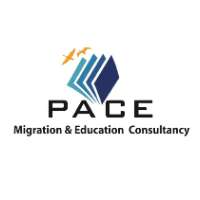According to the Australian Nursing Agency, nurses are currently in high demand in Australia. In fact, it is estimated that Australia will need more than 100,000 nurses by 2025. Therefore, the overseas nurses and midwives, commonly known as Internationally Qualified Nurses and Midwives (IQNM), are needed to fill the demand.
To be able to practice as a nurse or midwife in Australia, IQNM is required to apply for a working visa or permanent resident visa. Not only that, IQNM must be registered.
The Nursing and Midwifery Board of Australia (NMBA) is the agency that regulates the practice of nursing and midwifery. Along with the Australian Health Practitioner Regulation Agency (AHPRA), NMBA is responsible for the assessment and registration of IQNMs who want to practice in Australia.
The NMBA transitioned to an outcomes-based assessment (OBA) system for IQNMs who hold an international nursing qualification that is relevant to but not substantially equivalent to or based on similar competencies to an Australian approved qualification. The IQNMs also need to demonstrate that they meet the mandatory registration standards.
In other words, the OBA is the pathway for IQNM to gain a permanent residency in Australia.
What is the OBA?
The OBA is a two-stage assessment process: a multiple-choice question exam (MCQ) and an objective structured clinical exam. IQNMs must pass the first stage before moving to the next stage.
Stage one is a cognitive assessment, which is a computer-based MCQ exam. IQNMs must pass the exam to move to part two of the OBA.
Stage two is a behavioural assessment in the form of an objective structured clinical examination (OSCE). The OSCE has been developed to assess that an IQNM demonstrates the knowledge, skills and competence of a graduate-level Australian nurse or midwife.
Who is the OBA for?
The OBA is the assessment process for IQNMs who wish to register in Australia and who are assessed as holding relevant but not substantially equivalent qualifications (and who demonstrate they meet the mandatory registration standards).
Background
Prior to the start of the National Registration and Accreditation Scheme in 2010, the assessment of IQNMs was undertaken by the state and territory boards. In 2010, AHPRA developed a national model for the assessment for IQNMs.
Following a review of assessment processes, the NMBA developed an interim model of assessment for IQNMs which has been in place since 2014. The interim model was based on eight qualification assessment criteria and resulted in a more equitable and consistent assessment of IQNM applications.
Transition to a new model of assessment for IQNMs
The NMBA has moved to a permanent approach in the assessment of IQNMs. Changes under the new model include a reduction in the assessment criteria from eight to three, which took effect in January 2019.
This change streamlines the assessment process; however, the outcomes from assessments remain the same as under the previous eight criteria.
In March 2020, the NMBA transitioned to an outcomes-based assessment (OBA) for IQNMs who hold a qualification that is relevant but not substantially equivalent or based on similar competencies to an Australian approved qualification (and who demonstrate they meet the mandatory registration standards). This replaced the need for new referrals to bridging programs.
The NMBA undertook an extensive research project to explore the factors and requirements to establish an OBA which made recommendations that:
• the overall assessment process includes both a cognitive and behavioural component
• the cognitive assessment must be passed before the behavioural component is attempted, and
• an orientation program is established to orientate nurses and midwives to work in the Australian healthcare context.
The new model of assessment includes:
• the online Self-check for all IQNMs
• an orientation program for all IQNMs who are advised to continue with the assessment process, and
• an OBA for some IQNMs.
The only IQNMs whose qualification does not meet all the required criteria will be directed to the outcomes-based assessment pathway. The OBA includes both a cognitive and behavioural component. It is mandatory to pass the cognitive assessment before the behavioural component is attempted.
Once the two-stage assessment process is completed, all IQNMs will also be required to complete an orientation program consisting of three stages.
While stage one is an online assessment to introduce IQNMs to Australia and the Australian healthcare system, stage two covers the diversity of Australian culture. This will be completed once the IQNMs are registered with the NMBA.
The third stage of the orientation program will be provided by the IQNM’s employer, based on NMBA guidelines.
Do you want to know more about the OBA? Contact Pace Migration now and call us on 0434 123 123 for a quick chat or email us on [email protected] to book an appointment to have a consultation with our migration agent.
Thanks for reading!
Source: nursingmidwiferyboard.gov.au, australiannursingagency, ozzievisa, sbs.com.au, altaira.com.au



































